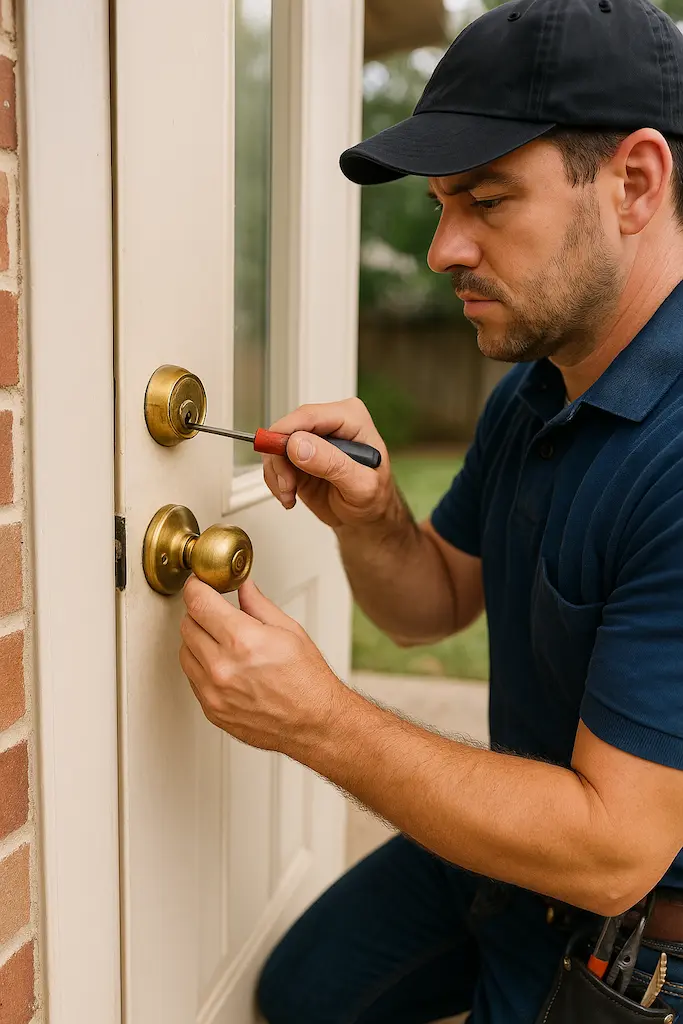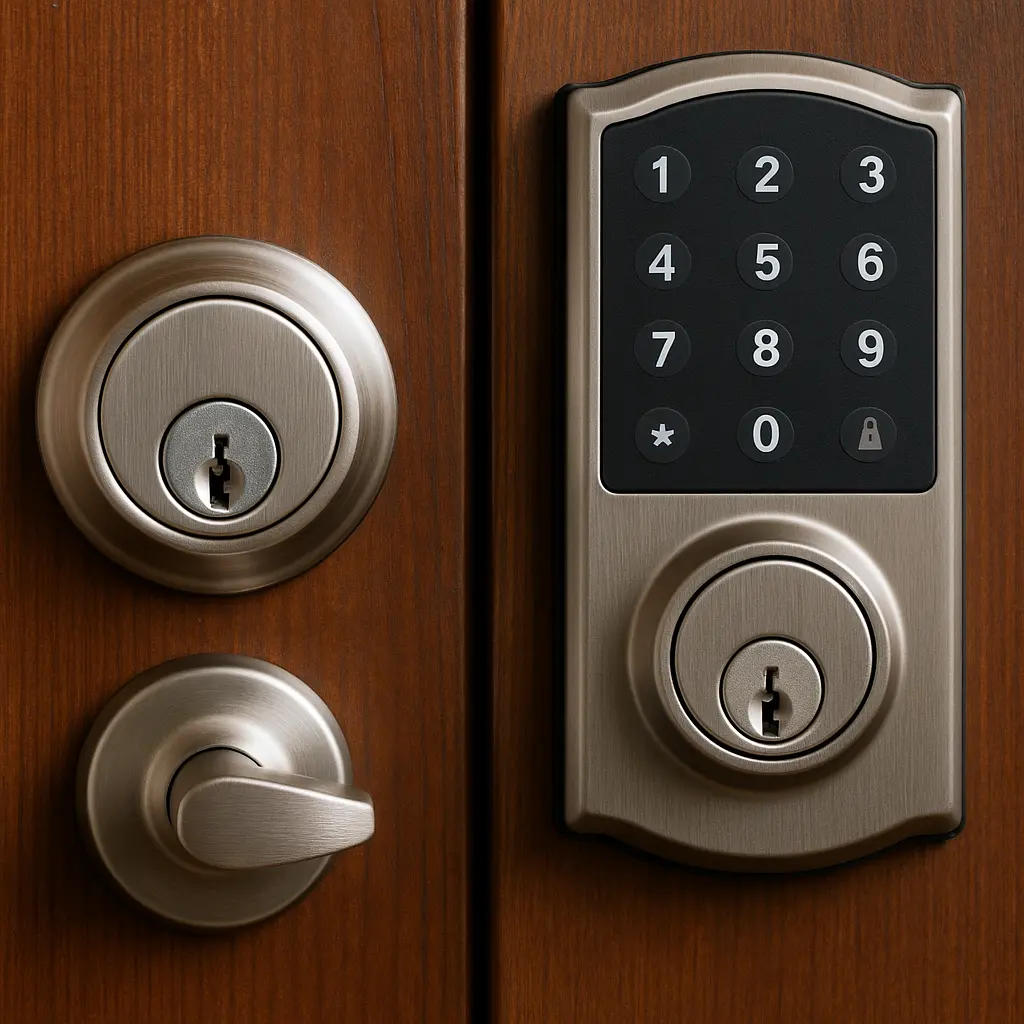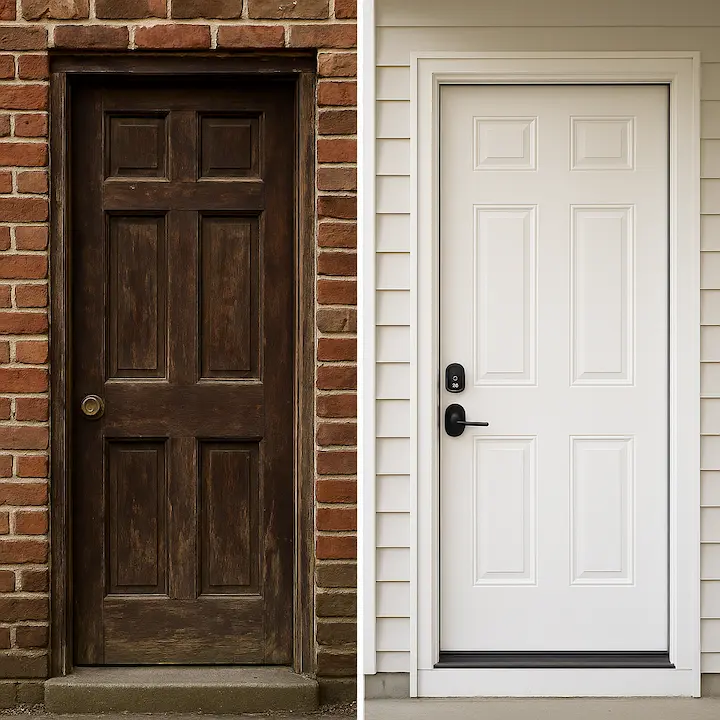1. Cost and installation
When people compare traditional deadbolts to modern smart locks, the first thing that comes up is price. A basic deadbolt can cost as little as $20–$40 at a hardware store, and many homeowners install it themselves with just a screwdriver. Smart locks, on the other hand, usually range from $150 to $300, and while some are DIY-friendly, others require professional installation. Think about it like this: a deadbolt is a one-time purchase with almost no hidden costs, while a smart lock is more like buying a mini computer for your door.
Beyond the sticker price, there are hidden costs to consider. A traditional lock may only require a one-time payment, but if you ever lose your keys, you might need to rekey the lock or replace it altogether – a service that can add another $50–$100 depending on your area. With a smart lock, the upfront investment is higher, yet you avoid the constant expense of cutting new keys for family members, tenants, or employees.
Installation is another factor. A deadbolt is straightforward: most homeowners can install it in under 20 minutes with a basic screwdriver. But smart locks often require aligning with existing door hardware, setting up mobile apps, and connecting to Wi-Fi or Bluetooth. Some models can be fitted over an existing deadbolt, while others replace the entire locking system, which can mean hiring a locksmith to ensure the fit is secure.
Professional installation fees vary by city. In smaller towns, a locksmith might charge $75–$100 for setup, while in metropolitan areas, the same job can run $150–$200 or more. If your smart lock integrates with a larger home security system, you may also need to pay for system configuration or even a monthly monitoring fee.
There’s also long-term value to think about. A deadbolt rarely needs replacement unless it wears down mechanically, which could take a decade or more. A smart lock, however, may need software updates, battery replacements every 6–12 months, and occasional troubleshooting when connectivity issues arise. For some homeowners, the convenience outweighs these small ongoing tasks. For others, the simplicity of a deadbolt wins every time.
The bottom line: don’t look at the purchase price alone. Consider the total cost of ownership – initial purchase, installation, maintenance, and potential replacements. If you’re someone who values peace of mind and modern convenience, a smart lock may justify the expense. If you’re budget-conscious and prefer reliability without extra technology, a traditional deadbolt is still one of the most cost-effective ways to secure your home.

2. Everyday convenience
Convenience is often the deciding factor. With a traditional deadbolt, you always need to carry a physical key. Smart locks change that routine: you can unlock your door with a smartphone app, a keypad, or even a voice command. Parents love giving kids a unique code, while travelers appreciate checking from the airport if the door is locked. No more hiding spare keys under the doormat – with smart locks, access is flexible, trackable, and designed for real life.

3. Security features
Both traditional locks and smart locks can be highly secure when installed properly. A solid deadbolt is purely mechanical – no batteries, no Wi-Fi, just metal strength. Smart locks add a new layer: you can generate temporary codes for guests or cleaners, revoke them instantly, and even view an audit trail. For maximum peace of mind, locksmiths often recommend combining both: a deadbolt plus a smart system.
4. Maintenance and reliability
A traditional deadbolt is simple to maintain – a quick lubrication once or twice a year keeps it turning smoothly, even after years of use. It has no batteries, no software, and almost nothing that can fail unexpectedly. That’s why many homeowners still trust it as the most reliable form of front-door protection.
Smart locks, however, bring extra convenience but also more moving parts to manage. Most models run on AA or AAA batteries, lasting anywhere from 6 to 12 months depending on usage. Heavy daily use, extreme cold, or constant Bluetooth connectivity can drain batteries faster. Forgetting to replace them on time can mean standing outside your own house, locked out, until you find a backup key or emergency locksmith.
Software is another factor. Smart locks regularly receive updates to patch security vulnerabilities or add new features. While this improves long-term safety, it can also introduce bugs or compatibility issues with phones, Wi-Fi routers, or smart home hubs. Homeowners sometimes report connection drops, delayed lock responses, or the need to reset the lock after an update.
Environmental conditions also matter. Traditional locks can rust or stiffen if exposed to rain, snow, or salty coastal air, but a bit of graphite or silicone spray usually restores smooth function. Smart locks, on the other hand, may suffer in very hot or humid climates, where electronic components degrade faster or where condensation seeps into the keypad. Outdoor-rated models exist, but they typically cost more.
Reliability isn’t just about the product – it’s also about your habits. Locksmiths often recommend:
- Deadbolts: lubricate twice a year for smooth use.
- Smart locks: replace batteries every 6–12 months.
- All locks: always keep one backup key in a safe place.
In terms of long-term reliability, deadbolts can last decades with minimal care, while smart locks may need replacement after 5–7 years due to battery compartment wear, outdated software, or broken digital components. For homeowners focused on low-maintenance security, deadbolts are the clear winner. For those who prioritize convenience and modern control, smart locks require more effort but provide features that many find worth it.
Ultimately, the best choice depends on how much maintenance you’re willing to do and how critical reliability is in your lifestyle. For families that travel often, smart locks with remote access and alerts provide peace of mind. For people who prefer “set it and forget it,” a solid deadbolt remains unbeatable in simplicity and dependability.
5. Which is right for you?
Choosing depends on your lifestyle. If you value simplicity and proven reliability, a traditional deadbolt is ideal. If you want flexibility, guest codes, and smart home integration, a smart lock can transform your daily routine. For many households, the best solution is a combination – sturdy deadbolt + smart system.
FAQ – Smart vs Traditional Locks
-
Yes. Most smart locks still let you unlock with a physical key or keypad, even if Wi-Fi is down.
-
Usually 6 to 12 months, depending on usage. Most models alert you before they run out.
-
Each has strengths. Deadbolts resist brute force, while smart locks add monitoring and flexible access.
-
Some models are DIY-friendly, but many require a locksmith to integrate with existing doors or security systems.
